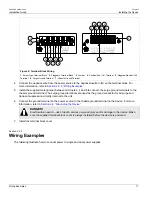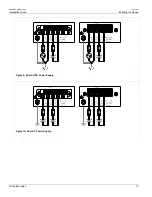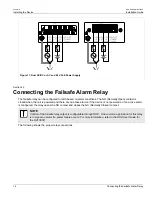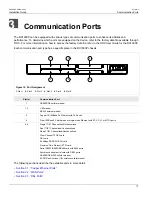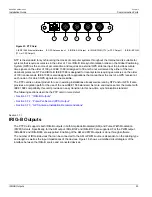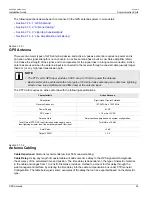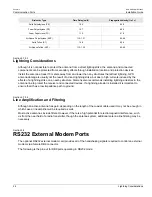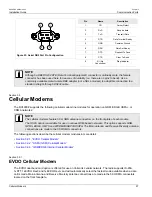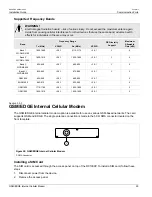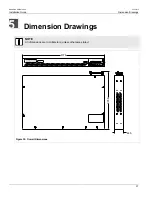
RUGGEDCOM RX1000P
Installation Guide
Chapter 3
Communication Ports
IRIG-B Outputs
23
1
2
3
4
5
Figure 23: PTP Card
1.
IEEE 1588 Ethernet Interface
2.
GPS Antenna Input
3.
IRIG-B AM Output
4.
IRIG-B PWM (TTL) or PPS Output 1
5.
IRIG-B PWM
(TTL) or PPS Output 2
NTP is the standard for synchronizing the clocks of computer systems throughout the Internet and is suitable for
systems that require accuracies in the order of 1 ms. IRIG-B time synchronization relies on the Global Positioning
System (GPS) as the source of accurate time and requires an external GPS antenna input to provide accurate
time signals on the order of 100 µs. IEEE 1588 is designed to fill a niche not well served by either of the two
dominant protocols, NTP and IRIG-B. IEEE 1588 is designed for local systems requiring accuracies on the order
of 100 nanoseconds. IEEE 1588 is also designed for applications that cannot bear the cost of a GPS receiver at
each node or for which GPS signals are inaccessible.
The PTP card is an ideal product for use in existing installations already well served by NTP and/or GPS. It also
provides a migration path for the use of the new IEEE 1588 standard. As more end devices enter the market with
IEEE 1588 compatibility, this card provides an easy transition to this new time synchronization standard.
The following sections describe the PTP card in more detail:
•
Section 3.7.1, “IRIG-B Outputs”
•
Section 3.7.2, “Pulse-Per-Second (PPS) Output”
•
Section 3.7.3, “GPS Antenna Installation Recommendations”
Section 3.7.1
IRIG-B Outputs
The PTP Card supports both IRIG-B outputs in both Amplitude Modulated (AM) and Pulse Width Modulation
(PWM) formats. Specifically, for the AM output, IRIG-B122 and IRIG-B123 are supported. For the PWM output,
IRIG-B002 and IRIG-B003 are supported. Enabling of the AM and PWM outputs is done through software.
The number of IRIG-B devices that can be connected to the AM or PWM source is dependent on the cabling type
and length as well as the input impedances of the devices. Figure 16 shows a simplified circuit diagram of the
interface between the IRIG-B source and connected devices.



